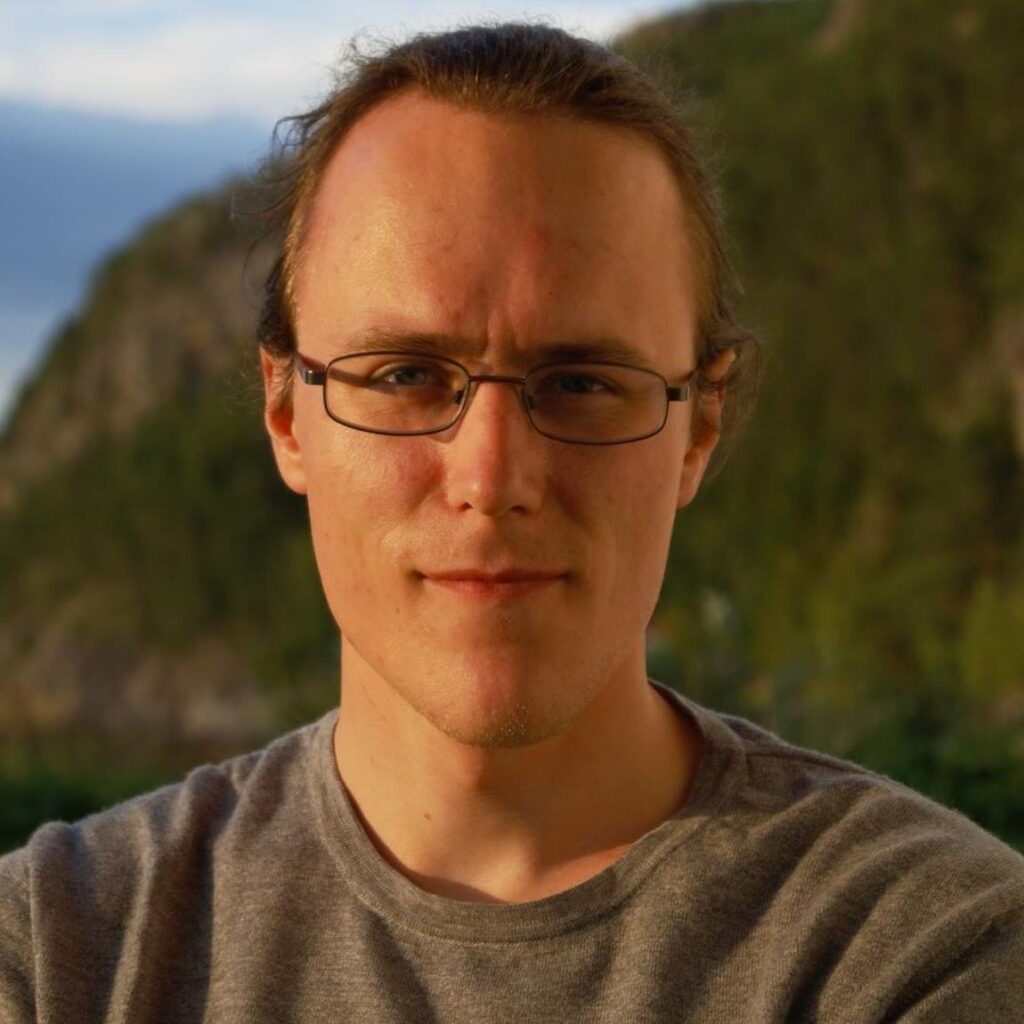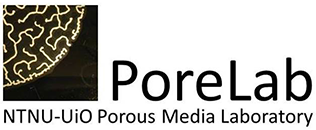
PHD TRIAL LECTURE AND PUBLIC DEFENCE
KIM ROBERT BJØRK TEKSETH – THE DEPARTMENT OF PHYSICS
Kim Robert Bjørk Tekseth has submitted the following academic thesis as part of the doctoral work at the Norwegian University of Science and Technology (NTNU):
“Computational imaging of structure and liquid dynamics in porous media”
Assessment Committee
The Faculty of Natural Sciences has appointed the following Assessment Committee to assess the thesis:
1st opponent: Prof. Robert K. Feidenhans’l, Niels Bohr Instituttet, University of Copenhagen, Denmark
2nd opponent: Prof. Veerle Cnudde, Utrecht University, The Netherlands
3rd opponent: Prof. Maria Fernandino, Department of Energy and Process Technology, NTNU
Professor Maria Fernandino has been appointed Administrator of the Committee. The Committee recommends that the thesis is worthy of being publicly defended for the PhD degree.
Supervisors
The doctoral work has been carried out at the Department of Physics, where Professor Dag Werner Breiby has been the candidate’s supervisor. Professor Alain Gibaud has been the candidate’s co-supervisor.
Public trial lecture:
Time: 27th of May at 10:15
Place: Disputasrommet, Main building NTNU Gløshaugen
Prescribed subject:
“New X-ray Imaging capabilities at fourth generation synchrotron radiation sources”
Public defence of the thesis:
Time: 27th of May at 13:15
Place: Disputasrommet, Main building NTNU Gløshaugen
Summary of thesis:
Computational imaging of structure and liquid dynamics in porous media
Imaging techniques, in particular computational imaging techniques utilizing computers in the image formation process, play an important role in scientific research, providing experimental support to theories and gaining new scientific insights into uncharted territories. Representative examples of computational imaging include computed tomography in which three-dimensional objects are reconstructed from two-dimensional projection images and phase-retrieval algorithms that reconstruct the phase of wavefronts from multiple intensity images. In this thesis developments and applications of three computational imaging techniques known as time-resolved computed tomography (CT), X-ray diffraction tensor tomography (XRD-TT) and Fourier ptychographic microscopy (FPM) are investigated. These imaging techniques are used to study multiple systems, including multi-phase flow in porous media, hierarchical materials, liquid crystals in confined geometries, and flaws residing on the surface of glass. The research is demonstrated in 9 articles that are discussed in the next paragraphs.
The non-destructive and non-invasive properties of CT make it a suitable technique for probing the interior of sample systems. Additionally, performing multiple rapid CT scans in succession allows dynamic sample systems to be studied in both three dimensions and time. In Paper 1, time-resolved computed tomography with a sub-minute temporal resolution was implemented with a home-laboratory based CT instrument, featuring a custom-built experimental sample stage designed to conduct two-phase flow experiments in quick succession, and an iterative reconstruction algorithm that incorporates prior sample information to suppress noise intrinsic to under sampled datasets. Through this setup fast sub-second pore-filling events such as Haines jumps and piston-like displacements were identified and characterized based on the liquid configuration states in the three-dimensional tomograms. Motivated by these initial results, we set out to study the finer interfacial dynamics of two-phase flow in a consolidated porous medium in Paper 2. Assuming that the liquid flow pattern in a porous medium could be made repeatable made it possible to deploy a stroboscopic imaging technique with an optimal angular acquisition scheme. We showed that for a consolidated porous medium made of sintered glass shards the flow pattern could indeed be repeated, allowing the three-dimensional dynamics of multi-scale drainage dynamics to be imaged with a sub-millisecond temporal resolution. Through these three-dimensional datasets quantitative insights into the dynamics of Haines jumps such as velocity, meniscus oscillations and non-locality of the interfacial dynamics were obtained. The novel stroboscopic imaging technique used to study drainage dynamics may also be utilized in imbibition experiments, while also being applicable to other dynamics that is repeatable. Next, the deformation of a shale sample under triaxial loading was monitored with time-lapse CT and digital volume correlation under quasi-static conditions in Paper 3. A new CT scan was conducted in-between the incremental axial loadings, alleviating blurring artefacts due to sample movements as the axial load was increased. In this work irreversible deformations in the displacement field were observed to be hidden within the linear stress-strain curve and a rotational rich state was observed prior to sample failure.
Tensor tomography based on small angle scattering and X-ray diffraction has attracted interest of late due to its ability to reconstruct the preferred orientation of crystallites in 3D samples non-destructively. XRD-TT allows the anisotropic features of crystallites in a sample to be reconstructed by modelling the scattered intensity distribution using spherical harmonics. In Paper 4, XRD-TT was used to study the orientation distribution of the hydroxyapatite within bone and mineralized cartilage of a young piglet. Here it was shown that the orientation of the hydroxyapatite mineral in the bone was directed towards the bone-cartilage interface. In Paper 5, the preferred orientation of several minerals in a Pierre shale sample was obtained through tensorial reconstruction, using a single tomographic axis, in contrast to multiple axes as commonly used. The accuracy of the single-tomography axis was validated through the bone-cartilage datasets in Paper 4, providing evidence that the gross orientational features may be retrieved for minerals that has a wide orientational distribution. In Paper 6, drawing on the experiences from the previous papers, we devised an experiment in which 8CB liquid crystals were confined in porous materials made out of glass. Due to the one-dimensional positional and orientational order of 8CB, the orientational distribution of these liquid crystals may be retrieved with XRD-TT in three-dimensional samples. We showed that the liquid crystals were homeotropically anchored to the surface of the glass, and that under flow these orientations were systematically altered. This technique enables investigation of how confinement and shearing may alter the orientation of liquid crystals in 3D.
Fourier ptychographic microscopy is an imaging technique that circumvents the traditional trade-off between field of view and spatial resolution. By collecting a series of low-resolution wide field of view images from angularly diverse illumination directions, a high-resolution complex image of both the amplitude and quantitative phase may be obtained through a phase retrieval algorithm. In Paper 7, FPM was used to identify and characterize flaws residing on the surface of glass through the quantitative phase maps. Through the phase maps, the flaw length, width, depth, orientation and eccentricity were characterized on a 40×19 mm2 glass surface. The accuracy of the flaw length, width and depth estimates was validated with atomic force microscopy. In Paper 8, a polarization-sensitive FPM setup combined with a custom-built dome-shaped LED matrix allowed the birefringent properties of biological samples to be obtained at a half-pitch resolution of 244 nm. Finally, Paper 9 reviews multiple computational imaging techniques, including CT with attenuation contrast and phase contrast, XRD-TT, and FPM, as applied to a bone and cartilage sample of a young piglet. Through the quantitative phase maps of FPM, it is possible to obtain images of internal structures like cartilage canals and chondrocytes, which in conventional bright field microscopy would appear transparent due to the weakly absorbing properties of these materials.
These experimental studies represent novel implementations and applications of computational imaging techniques on multiple sample systems and they open a plethora of new experimental pathways to be explored.
